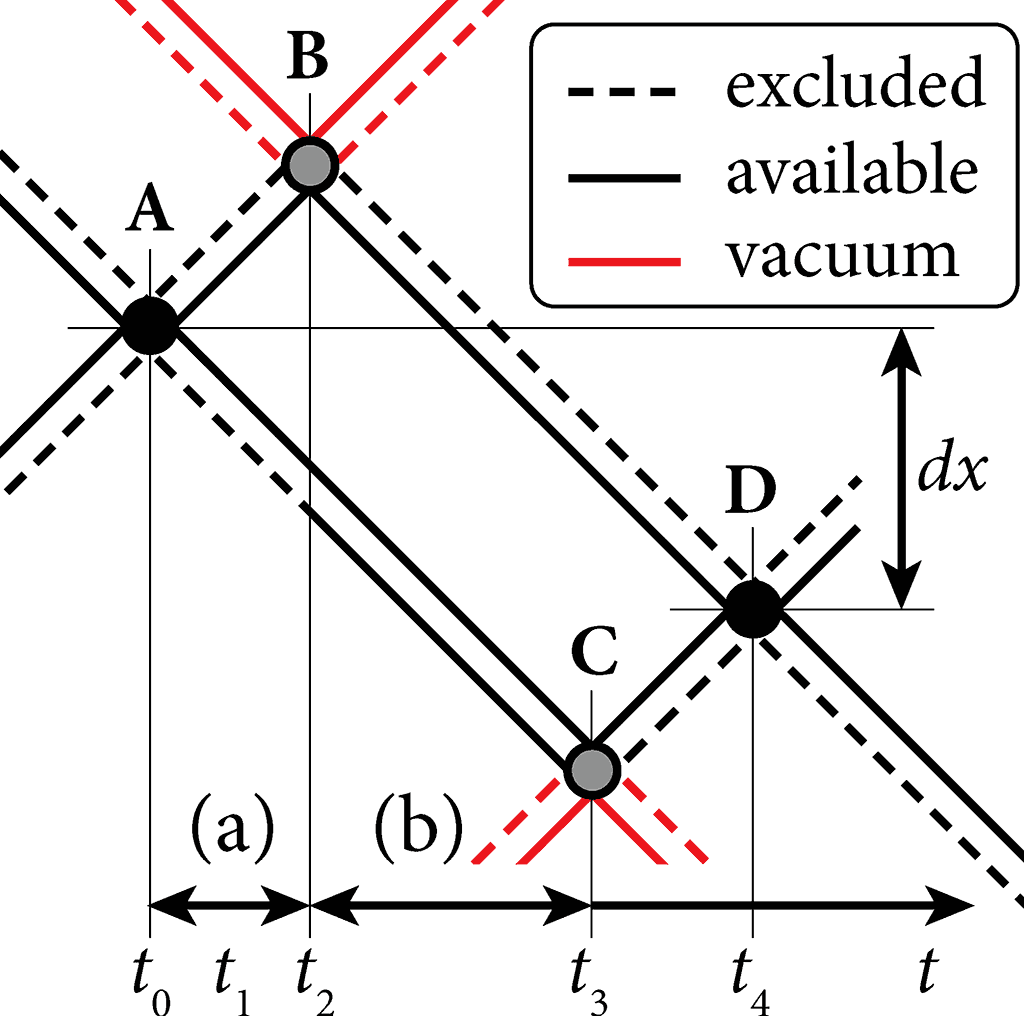Plasma
In our 2014 Cosmology paper, we briefly defined plasma, and mentioned it again a few times in the body of the paper, where it helped describe some interesting scenarios where matter failed to remain coherent.
Plasma is matter that gets mixed-up. Its constituent parts freely exchange, rather than sticking in the coherent form that we're accustomed to seeing in our human environment. If we look at this more closely, we find that it covers the criteria for plasmas known to physics, and defines them in more detail.
A fermion
A fermion is an instance of localized quanta: two bosons have come together at a unique spatial solution.
Here's how a fermion persists in our environment:

Fig.1: Conserved re-constitution:
Fermion A re-constitutes as Fermion D
Fermion A radiates as two entangled bosonic parts (which you can think of as expanding together in the same sphere shell). One part is collapsed by vacuum energy (another boson, but of unknown source) at point B, which becomes a fermion for an instant, before radiating again (just like fermion A did). The same happens at C, which also interacts with vacuum. At fermion D, the parts from fermion A meet up again, and the cycle resumes as if from fermion A.
Plasma
Plasma is the state where matter fails to re-constitute consistently, and fermions have no continued identity.
Taking fig.1 as an example, we may modify it so that A's boson to B does not return to D, but instead radiate away as vacuum energy. Fermion D may then reconstitute using a different boson, from vacuum. In a plasma, bosons freely change partners, and may radiate considerable distances before collapsing. The main feature of a plasma, is that the conserved fermion re-constitution process is intercepted by external bosons.
This usually happens when the matter being considered is rarefied among bosons of much higher mass-energy, which denies the lighter constituents any continued identity: the lighter components will become a flux for the heavier charged particles, e.g. a magnetic flux, or the neutrino soup. This 'flux conduction' matches our definition of charge, implying that plasmas are charged. As with the standard definition of a plasma, the near-neutrality of a larger region may not hold for smaller regions, which may be ionized, and command a magnetic flux.